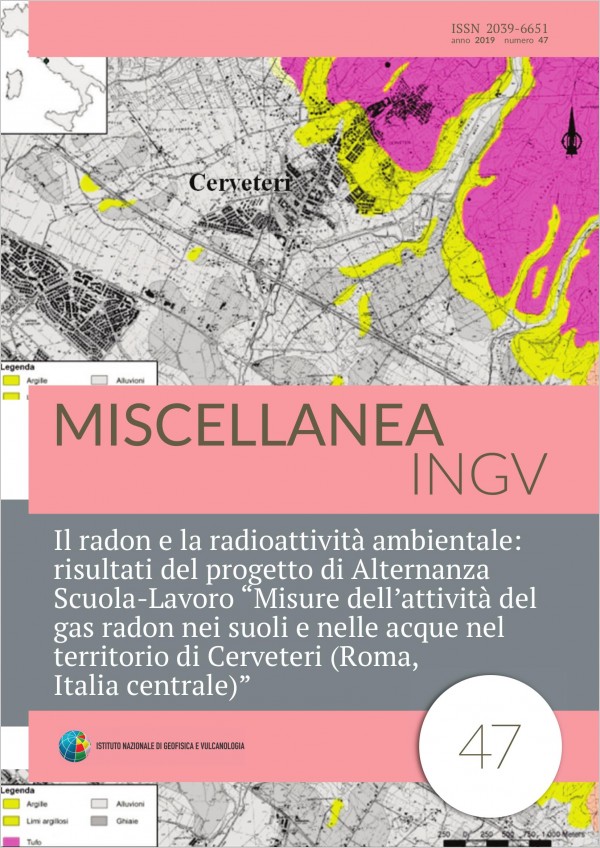Il radon e la radioattività ambientale: risultati del progetto di Alternanza Scuola-Lavoro “Misure dell’attività del gas radon nei suoli e nelle acque nel territorio di Cerveteri (Roma, Italia centrale)”
Main Article Content
Abstract
During 2017-2018 academic year, a SchoolWork Pathway (SWP) project has been developed and accomplished with the collaboration of students attending the last year of the scientific high school of Cerveteri (Rome). The main focus of the project was to introduce students to an environmental problem that is not well known but it is locally present. The project has been addressed to the study of natural radioactivity due to the presence of tuff outcrops (Tufo rosso a scorie nere and Tufi stratificati varicolori di Sacrofano, deriving from middlelower Pleistocene volcanic activity) that naturally produce the radioactive gas radon. Thus, the Cerveteri area has a natural radioactivity but radon is a gas that can migrate and easily escape in the atmosphere. However, tuffs can be used as building material and, in this case, radon can accumulate in houses and closed spaces (basements and cellars). The SWP project has been developed by means of lectures, experimental measurements and data elaboration of gas radon activity in soil, indoor (in the students’ houses) and dissolved in water. Results have highlighted moderate (>16000 Bq/m3) but localized anomalies of soil gas radon and mediumlow (< 200 Bq/m3) values of indoor radon excepting some cases exceeding the threshold (> 300 Bq/m3) recommended by 2013/59 Euratom Directive.
Article Details
Section
Article

This work is licensed under a Creative Commons Attribution 4.0 International License.

